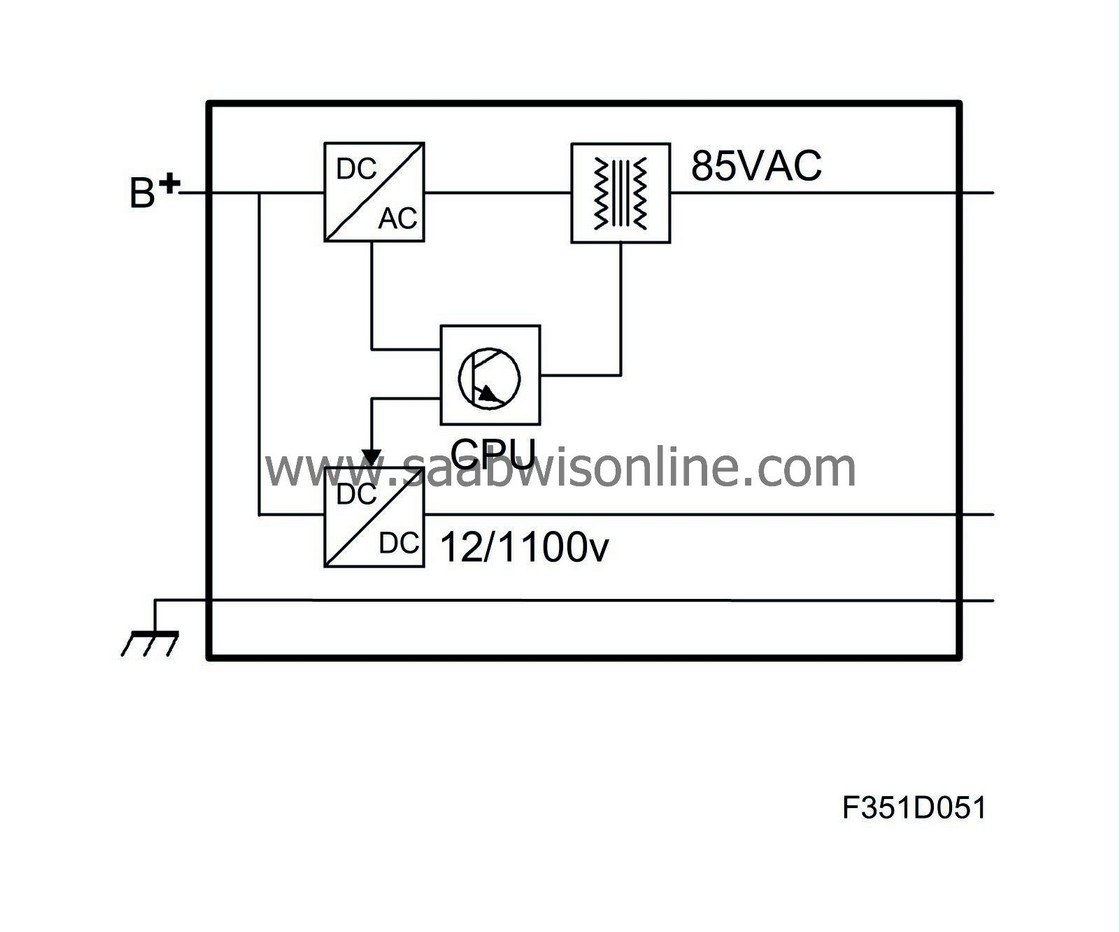PRE-RELEASE
Xenon lamp function, detailed description
| Xenon lamp function, detailed description |
| Xenon lamp |
Xenon bulbs are type D2S with a wattage of 35 W. The bulb and ignition transformer constitute two separate units. The Xenon bulb is a gas discharge bulb, thus requiring no filament. Light is produced through a plasma discharge between two electrodes separated by a distance off 4.2 mm. The electrodes are mounted in a capsule (igniter). The igniter contains the inert gas as well as other substances such as mercury and thallium. It is in this gas mixture that discharge occurs, under high pressure and high temperature.

A high-voltage pulse is required to light the bulb and initiate discharge. This high-voltage pulse is generated in the ignition transformer (663a), which also functions as a bulb socket. The high-voltage pulse can normally reach about 23,000 V. When the bulb is removed, the high-voltage pulse can reach 30 kV. Once discharge has been initiated by the high-voltage pulse, power is supplied to the bulb by the ballast (663b). The ballast ensures that the bulb receives the proper operating conditions, normally a supply voltage of 85 V AC and a frequency of approx. 300 Hz.
The bulb has an electric output of 35 W, but generates approx. three times as much light flow as a 55 W H7 bulb.
| Xenon bulb ignition |
High-voltage pulse
When the ballast is supplied B+ on pin 1, the ignition procedure starts. The ballast produces a charge voltage of max. 1100 V (normal charge voltage is 550 V) in a DC converter (12/1100 V). This voltage is conducted to the igniter, + 550 V pin 3 of the ballast, to pin 4 of the igniter. The charge voltage charges a capacitor (C) in the igniter. In this manner energy is stored to produce an ignition impulse. Voltage over the capacitor now rises until the spark gap (SG) begins to conduct, which occurs at approx. 550 V. The energy stored in the capacitor is dumped to the transformer's (T) primary winding (P). Over the transformer's secondary winding, a high-voltage pulse is produced that can reach 30 kV (normally approx. 23 kV) to light the bulb.
Bulb ignition
During the ignition procedure, the ballast produces an AC voltage, running voltage, from ballast pin 4 to ignition pin 2 and ballast pin 5 to ignition pin 1. The task of the ignition impulse is to start discharge in the bulb (an ignition impulse is usually needed). Running voltage then takes over.
The ballast measures the current in the running voltage circuit. If it rises after the ignition impulse, the ballast knows that the bulb has been lit and switches off the charge voltage. If current does not rise after an ignition impulse, the ignition attempt is repeated until the bulb lights. The number of ignition attempts is limited to 15 for a period of 0.2 s. If the bulb does not light during these attempts, the ballast stops the ignition attempts and the bulb remains off.
| Xenon lamp operation |
Once discharge has started after the ignition impulse, the ballast ensures that the bulb receives the proper operating conditions as regards current and voltage. The ballast produces running voltage in a DC/AC converter, where 12 V DC is converted to approx. 85 V AC with a frequency of about 300 Hz. Upon start of a cold bulb, running voltage, running voltage just after ignition impulse tends to be relatively low, approx. 20 V. As long as B+ is supplied to the ballast, it produces a running voltage and the bulb lights.

If the bulb goes out during operating, the ballast detects this by current monitoring of running voltage and the ignition procedure is started. If the ignition procedure fails, the internal protective functions switch off the ballast.


